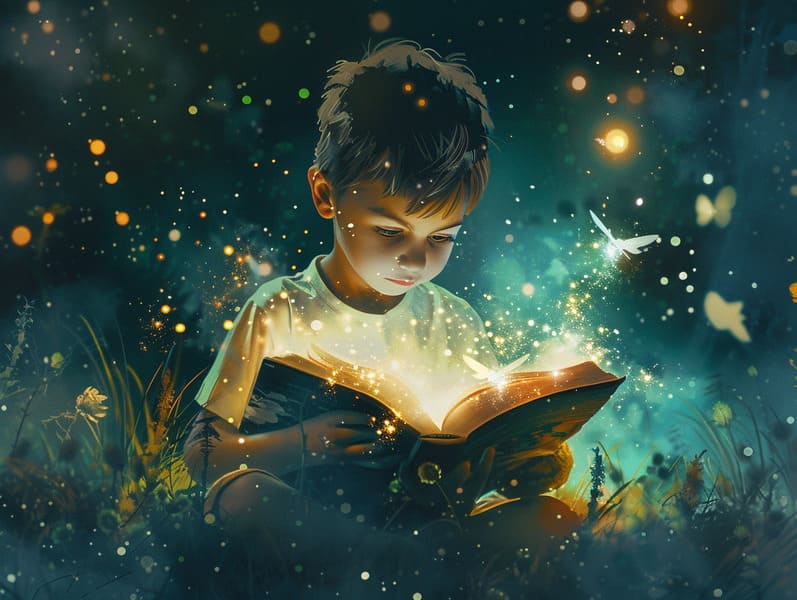Tracing the Heritage of Ancient Fairy Tales with Its Consistent Delight.
Tracing the Heritage of Ancient Fairy Tales with Its Consistent Delight.
Blog Article

Historical fairy tales have historical significance. These stories have been whispered from one generation to the next far before they were ever inscribed. They developed from a variety of societies, including African traditions. They were initially transmitted among elders, often carrying themes and messages concerning the societal norms and beliefs of the time.
The famous Grimm duo, the two Grimm brothers, were among the first to collect many of these beloved fairy tales. Their anthology, "Grimm's Story Collection," included tales like "The Little Glass Slipper," "Little Brother and Little Sister," and "The True Story of Snow White," which have since become mainstays in the world of classic fairy tales. Similarly, Hans Andersen's whimsical fairy tales, such as "The Little Mermaid," and "The Ugly Duckling," have stolen hearts worldwide, securing their place in the pantheon of famous fairy tales.
Despite their historical roots, these tales remain as relevant as ever, especially as children's bedtime stories. These whimsical stories are now available in multiple formats, including artistically illustrated books, whimsical animations, and free fairy tales online.
Their ongoing significance can be connected to several enchanting factors:
Life Lessons: Traditional fairy tales often teach important moral lessons. Narratives like "The Story of the Boy Who Cried Wolf" teach the value of being truthful, while "The Tale of the Tortoise and the Hare" underline the benefits of perseverance and unpretentiousness. These narratives offer kids clear distinctions between virtue and vice, helping to shape their moral compass in a mild yet profound way.
Sympathy and Perception: Old fairy tales frequently involve heroines facing trials and tribulations, inciting audiences to feel with their struggles and back their triumphs. For instance, "Beauty and the Beast" demonstrates the importance of appreciating inner worth to perceive the true essence of a person, advancing understanding and perception.
Cultural Perception: Many classic fairy tales are rich in the cultural contexts from which they arose. Learning from these fairy tales can provide illuminating insights into different traditions, enhancing a sense of cultural respect and recognition.
Inventiveness and Fantasy: The magical elements in old fairy tales—mythical creatures—promote children’s visions. These tales take readers to magical realms, triggering fantasy ideas and a sense of wonder that remains a lifetime.
Classic fairy tales are not only delightful but also didactic. They function as alluring tools in building various mind and heart abilities in children. When timeless fairy tales are spoken, they promote language development by teaching new terms and meanings and sophisticated sentence structures. This practice also boosts auditory skills and attention, as kids concentrate deeply, excited to see what happens next.
Furthermore, debating the themes and characters of fairy tales can promote thinking skills and critical thinking. Young readers are taught to pinpoint patterns, foresee events, and catch on to cause and effect. These explorations also advance young ones speak out their thoughts and feelings, cultivating their emotional intelligence.
In today’s digital age, the abundance of online storybooks has made these fairy tales more acquirable than ever. Online platforms and apps feature huge assortments of Grimm's fairy tales that can be explored or heard anytime, anywhere. Fairy tales voiced are particularly awesome site prevalent, giving an interactive method for kids to engage with these alluring stories. Sound books and spoken videos guide characters and settings to life, often supported by enchanting melodies and music that augment the storytelling journey.
The persistent attraction of classic fairy tales lies in their ability to adjust to modern society while sustaining their main lessons. Contemporary retellings of these fairy tales often introduce more varied figures and modern settings, making them understandable to today’s audience. However, the underlying themes of bravery, warmth, and even-handedness remain unchanged, continuing to affect audiences of all ages.
Ancient fairy tales also offer a sense of coziness and homeliness. They provide a structured narrative with a apparent beginning, middle, and end, often ending with the culmination of conflicts and the triumph of justice over injustice. This steadiness can be soothing for children, rendering a sense of unchangeability in an fluid world.
Old fairy tales continue to enthrall and educate new generations, maintaining their spell and impact in modern society. As kids' bedtime tales, they afford a perfect blend of charm and enlightenment, nurturing moral values, empathy, and creativity. The presence of online storybooks and the favor of fairy tales narrated warrant that these traditional fairy tales remain within reach to new generations.
By conserving and making known these tales, we continue to appreciate the rich tapestry of folklore and cultural heritage. Whether you are reading a vibrantly illustrated book, perusing a online library, or listening through an spoken story, the grace of popular fairy tales is always within reach. These fairy tales emphasize of the unending impact of storytelling and its ability to tie us across time and space.
Regardless if you are experiencing a beautifully illustrated book, experiencing a online collection, or listening via an sound book, the grace of timeless fairy tales is always within reach.
These fairy tales reveal of the unchanging impact of narratives and its ability to hold us together across time and space, establishing a link that delights and instructs alike.